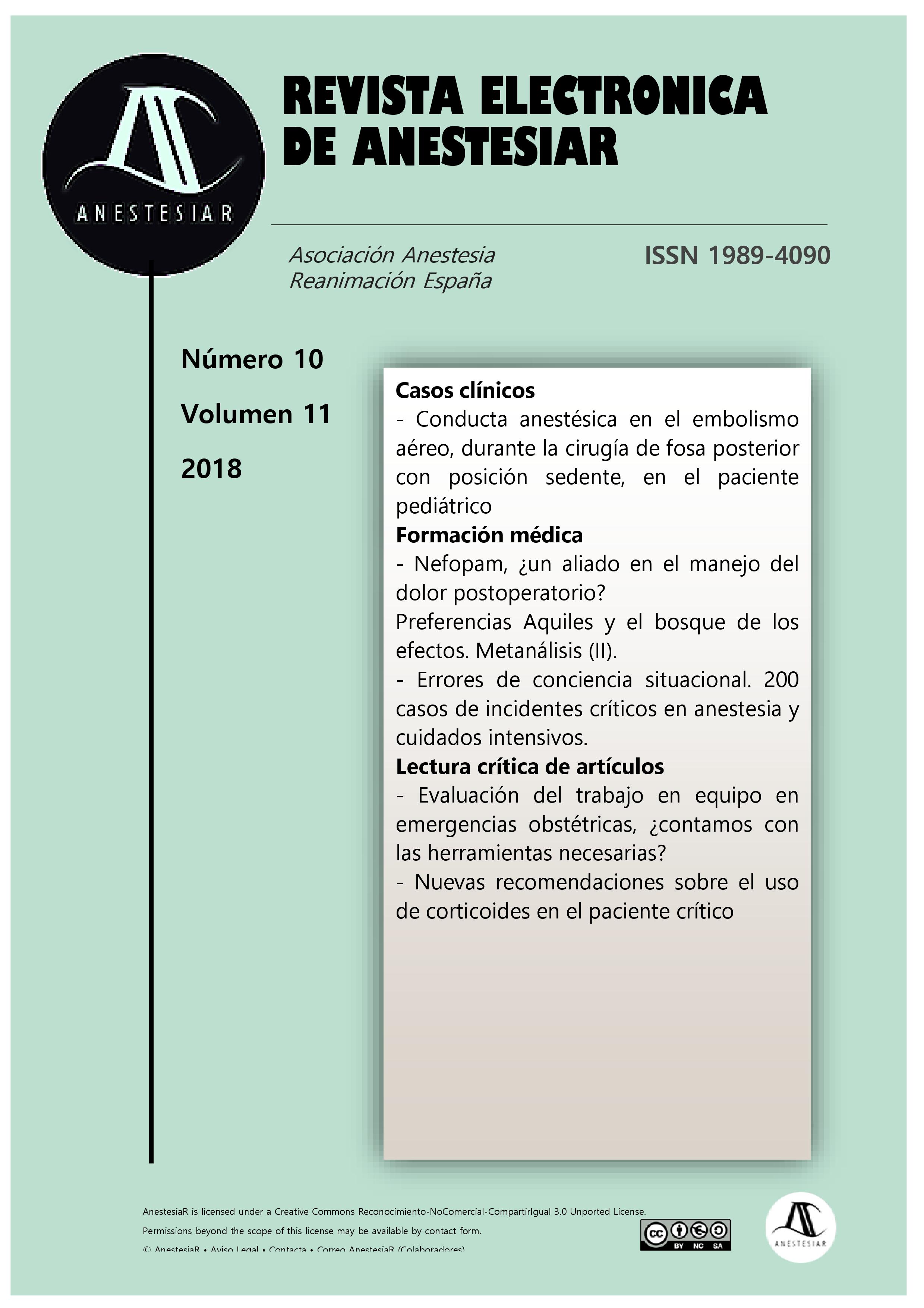Anaesthesic practice in air embolisms during posterior fossa seated position surgery in pediatric patient
DOI:
https://doi.org/10.30445/rear.v10i11.644Keywords:
Posterior fossa, Neurosurgery, Air embolismAbstract
Air embolism constitutes an emergency situation in pediatric neurosurgery. The sedentary surgical position is a risk factor for its development.
We present the case of a pediatric patient who underwent an exeresis of a posterior fossa tumor in a sitting position. During the procedure, the patient presented two episodes of air embolism with hemodynamic repercussion. In this article we describe its course and its management. The objective of this work is, on the one hand, to describe the clinical case presented and, on the other hand, to review the anesthetic management of air embolism as well as the role of non-invasive monitoring for early diagnosis.
References
Harrison EA, Mackersie A, McEwan A, Facer E. The sitting position for neurosurgery in children: a review of 16 years’ experience. Br J Anaesth. 2002 Jan;88(1):12–7.
Palmon SC, Moore LE, Lundberg J, Toung T. Venous air embolism: a review. J Clin Anesth. 1997 May;9(3):251–7.
Standefer M, Bay JW, Trusso R. The sitting position in neurosurgery: a retrospective analysis of 488 cases. Neurosurgery. 1984 Jun;14(6):649–58.
Rozet I, Vavilala MS. Risks and Benefits of Patient Positioning During Neurosurgical Care. Vol. 25, Anesthesiology clinics. 2007. p. 631–x.
Shaikh N, Ummunisa F. Acute management of vascular air embolism. J Emerg Trauma Shock. 2009 Sep;2(3):180–5.
Toung TJ, Rossberg MI, Hutchins GM. Volume of air in a lethal venous air embolism. Anesthesiology. 2001 Feb;94(2):360–1.
Pandia MP, Bithal PK, Dash HH, Chaturvedi A. Comparative incidence of cardiovascular changes during venous air embolism as detected by transesophageal echocardiography alone or in combination with end tidal carbon dioxide tension monitoring. J Clin Neurosci Off J Neurosurg Soc Australas. 2011 Sep;18(9):1206–9.
Giebler R, Kollenberg B, Pohlen G, Peters J. Effect of positive end-expiratory pressure on the incidence of venous air embolism and on the cardiovascular response to the sitting position during neurosurgery. Br J Anaesth. 1998 Jan;80(1):30–5.
Downloads
Published
How to Cite
Issue
Section
License
Copyright (c) 2018 Revista Electrónica AnestesiaR

This work is licensed under a Creative Commons Attribution-ShareAlike 4.0 International License.
 Envío y derechos de autor
Envío y derechos de autor


 Revista Electrónica AnestesiaR by
Revista Electrónica AnestesiaR by 